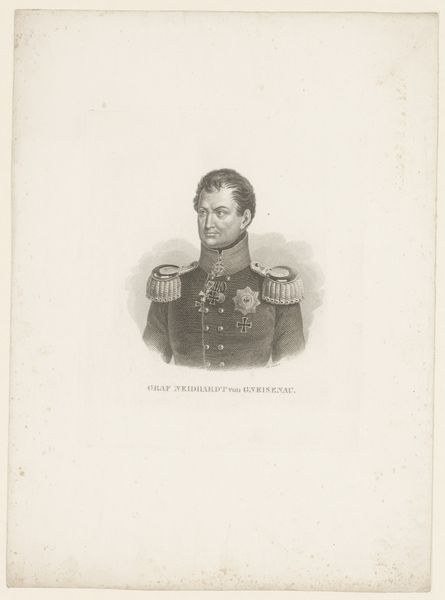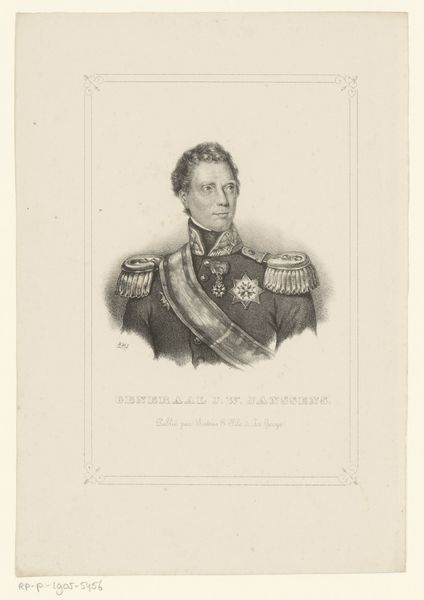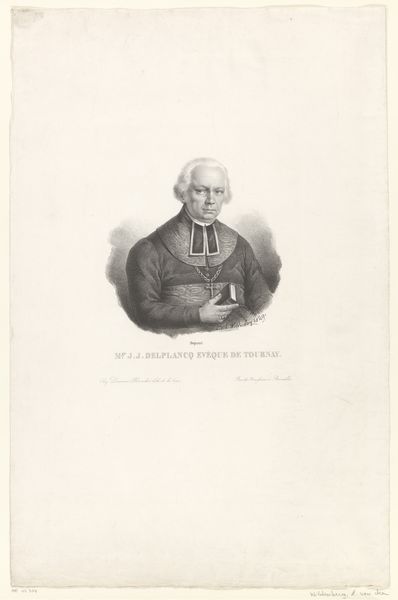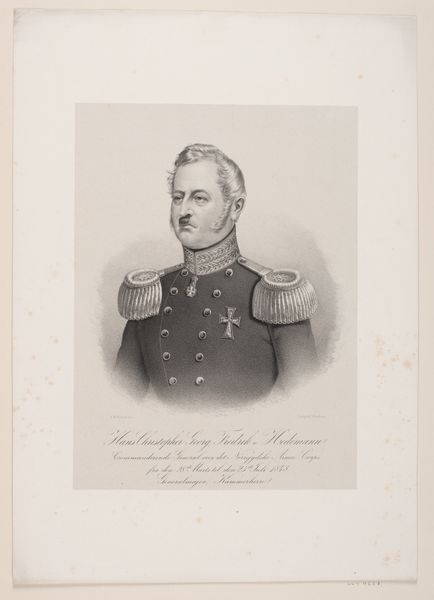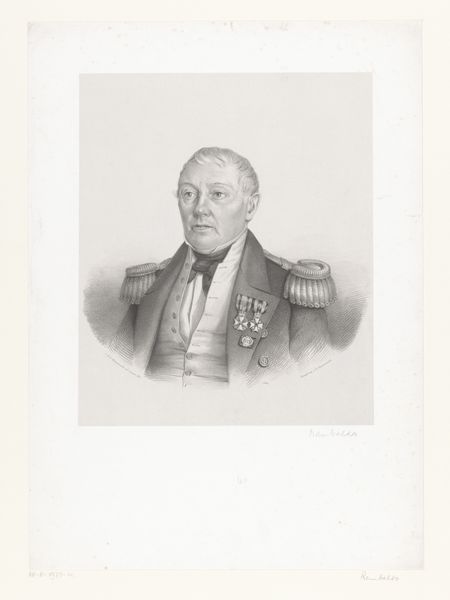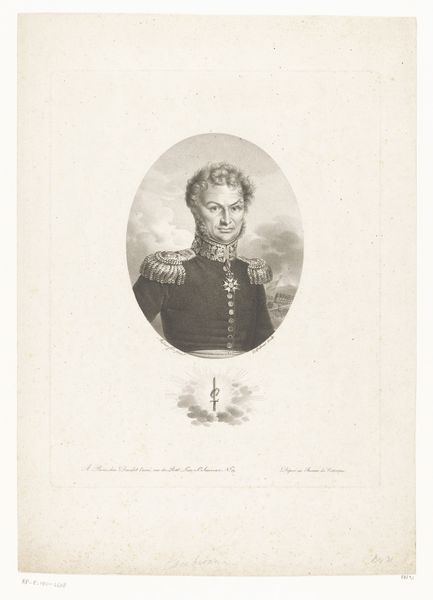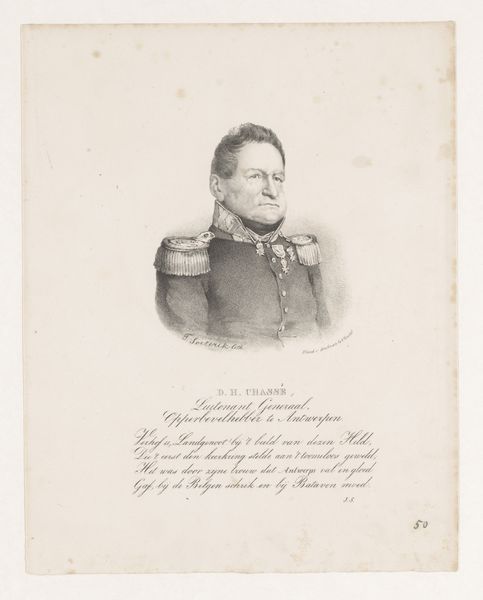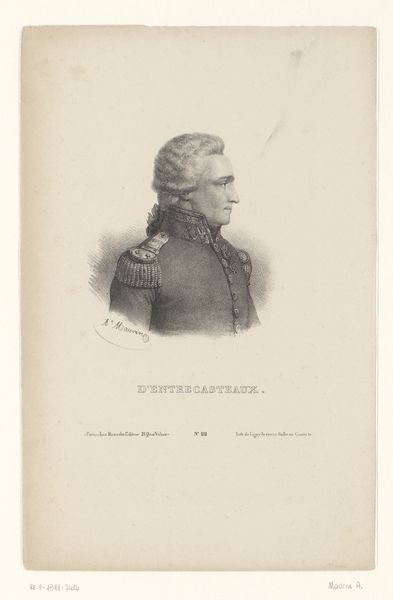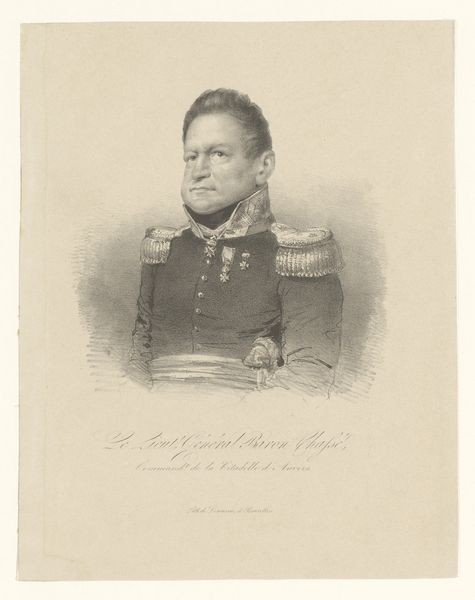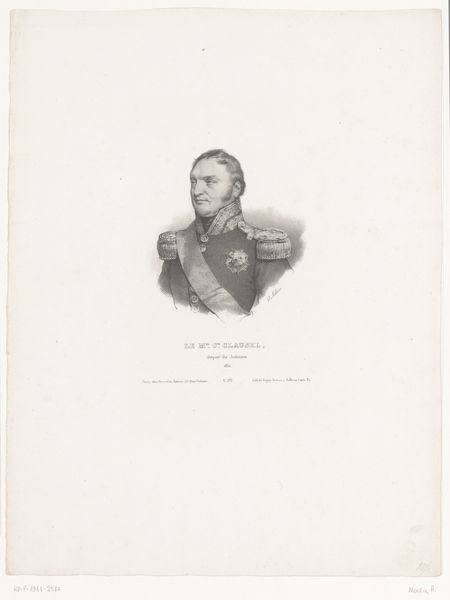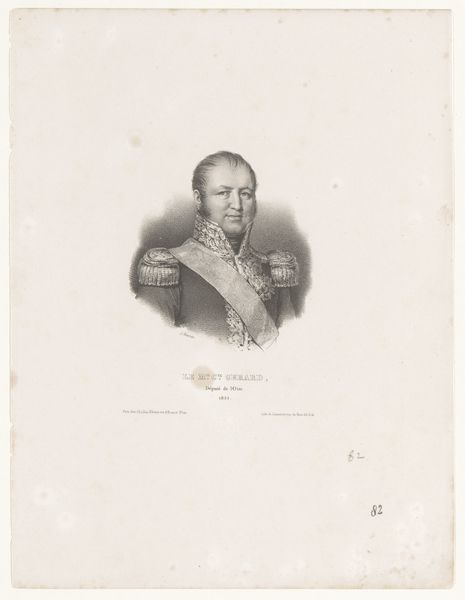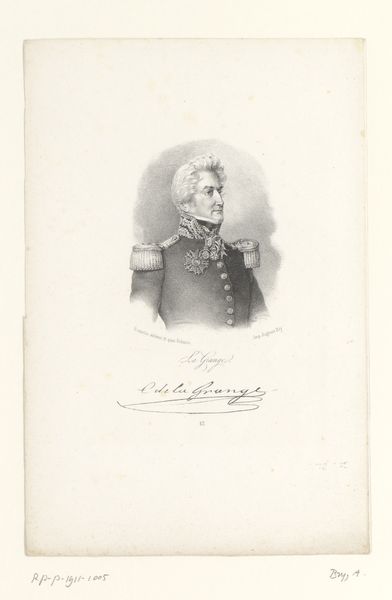
engraving
#
portrait
#
pencil drawn
#
light pencil work
#
pencil sketch
#
old engraving style
#
pencil drawing
#
pencil work
#
history-painting
#
academic-art
#
engraving
#
realism
Dimensions: height 342 mm, width 255 mm
Copyright: Rijks Museum: Open Domain
Editor: Here we have Christian Heinrich Gottlieb Steuerwald's engraving, "Portret van Joseph Jacobus van Geen," dating from around 1826 to 1833. It feels quite formal and imposing. The precision in the rendering of his uniform and medals is striking. What can you tell me about this portrait? Curator: Well, consider the context. The early 19th century was a period of nation-building and the rise of powerful militaries. Portraits like these were essential tools for constructing national identity and projecting power. How do you think this image functions within that socio-political landscape? Editor: I guess it’s about idealizing authority? Van Geen is literally weighed down with medals and epaulettes. The engraving itself gives it an air of officialdom. Almost like propaganda. Curator: Precisely! Engravings like this made portraits accessible to a broader public. Think about it – who would have had access to an oil painting? This print would have circulated, shaping public perception of Van Geen and, by extension, the military and the state. How do you think this contrasts with portraits of royalty? Editor: Royalty portraits were probably more about divine right. This is more about earned merit. A successful military man promoted as a leader. What about the artist's role in promoting this image? Curator: The artist is, of course, complicit. Steuerwald is serving a purpose, and his skill is being used to bolster Van Geen’s image and the institution he represents. However, he may also just need work and income. Editor: So, it’s a balancing act? A beautiful engraving that's part of the power dynamic. I never thought about portraiture that way. Thank you! Curator: My pleasure! Hopefully, it helps you see these works not just as depictions of people, but also of the values and power structures of their time.
Comments
No comments
Be the first to comment and join the conversation on the ultimate creative platform.
